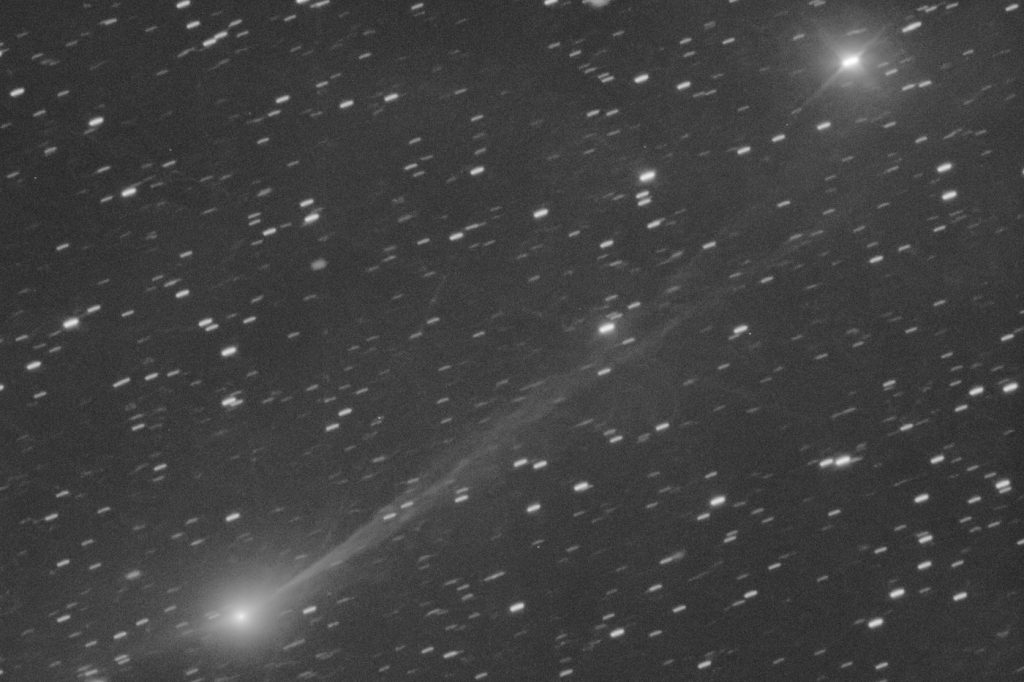Questions continue to swirl regarding the nature of 3I/Atlas, an interstellar object that has recently entered our solar system. Discovered in July 2023 by the NASA-funded Atlas survey telescope, this remarkable comet is only the third known celestial object identified as coming from outside our solar system. Despite the excitement surrounding this discovery, NASA emphasizes that while it remains vigilant for signs of extraterrestrial life, there is currently no evidence to suggest that 3I/Atlas is anything more than a comet.
3I/Atlas has attracted significant attention due to its intriguing characteristics and anomalies, which some critics argue warrant considering it as a potential extraterrestrial entity. These anomalies could indicate unusual behavior or properties that diverge from typical cometary activity. This has fueled speculation and intrigued scientists, as the prospect of discovering new forms of celestial phenomena or even indications of advanced life forms holds great significance for the scientific community.
In an interview, host Richard Southern converses with Avi Loeb, a theoretical physicist and professor at Harvard University, about the implications of 3I/Atlas and the broader questions surrounding the possibility of alien activity. Loeb has been an outspoken advocate for the examination of unidentified objects and phenomena, often proposing that the scientific community should maintain an open mind regarding the existence of extraterrestrial technologies.
Loeb's insights serve to underscore the ongoing debate among scientists. While some observe that the peculiar behaviors exhibited by 3I/Atlas could be dismissed as anomalies associated with its journey through the solar system, others propose that these traits might suggest something far more extraordinary. For instance, there are hypotheses regarding the object's trajectory, speed, and physical composition that could challenge our existing understanding of cometary and interstellar phenomena.
The interest in 3I/Atlas coincides with a broader societal fascination with the possibility of extraterrestrial life. As advancements in technology enable astronomers to identify interstellar visitors with increasing frequency, scientists and the public alike are left pondering the implications of such discoveries. Could these objects potentially serve as vessels or remnants of extraterrestrial civilizations? Or are they merely natural formations shaped by physics and cosmic forces?
NASA’s current position emphasizes the importance of rigorous scientific investigation and a cautious approach to claims of potential alien activity. As research continues, astronomers and physicists are expected to analyze data from 3I/Atlas to glean insights into its composition and behavior. This research could facilitate a deeper understanding of what it means to traverse the vast distances of our galaxy, offering a clearer view of the processes at work in our universe.
For listeners interested in exploring this topic further, the interview with Avi Loeb provides a comprehensive examination of 3I/Atlas and the surrounding controversies. The dialogue reflects the ongoing struggle within the scientific community to grapple with the unknown and assess the implications of discoveries that could redefine our understanding of life beyond Earth.
In summary, the intriguing qualities of 3I/Atlas prompt renewed interest in interstellar phenomena and the potential for life outside our planet. While the evidence remains inconclusive, the discourse surrounding this comet illustrates humanity's persistent curiosity about the cosmos and our place within it.












